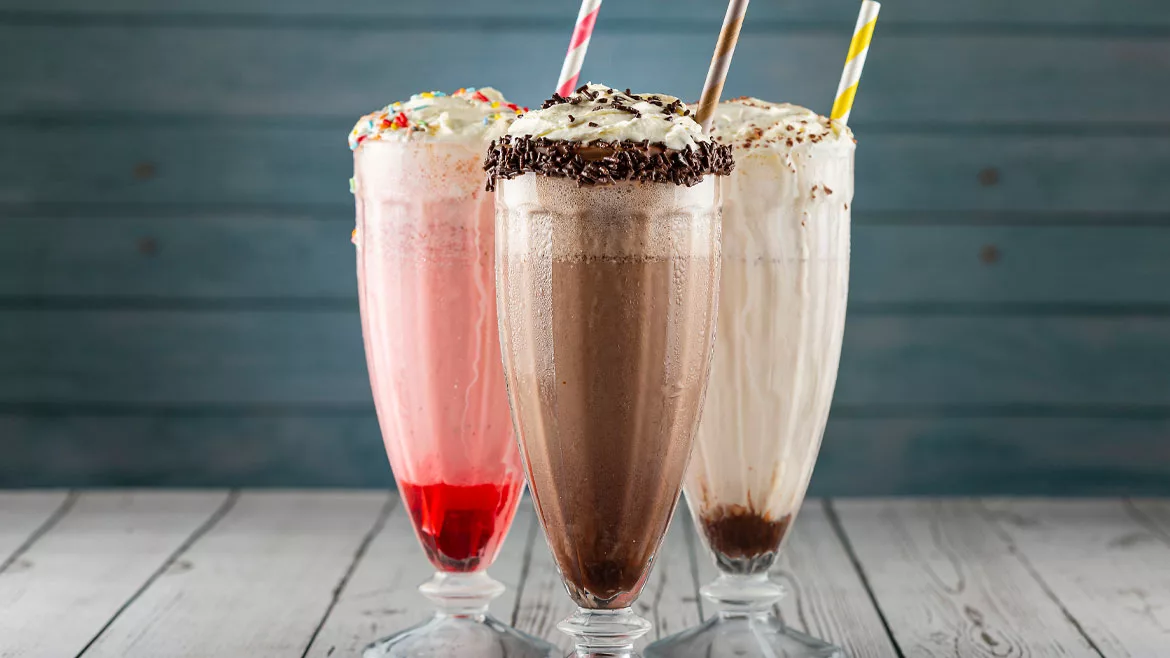How Sweet it Is
How Sweet it Is
Diet drinks hold more potential in 2005 than perhaps any other time in the beverage industry and across more product platforms than ever before. They held up the soft drink market in 2004. With regular soft drinks dropping about 2 percent in sales, diets gained more than 6 percent. And most predications are calling for the diet trend to continue. Datamonitor, based in London, recently published a report that indicates sales of diet-related foods and beverages will grow $16 billion in the United States and Europe by 2008, creating a $100-billion diet market.
In terms of artificial sweeteners, the Freedonia
Group, Cleveland, Ohio, predicts an 8.3 percent increase per year for the
next three years, for a sales total of $189 million in 2008 for food, and
it predicts demand for beverage sweeteners will reach $321 million by 2006.
The major cola companies are playing their part in the
trend, with several new products scheduled for launch this year. The
Coca-Cola Co. is expanding its diet reach with Coca-Cola Zero, which will
be sweetened with a blend of aspartame and acesulfame potassium, and will
hit the market in June.
The upcoming Zero product is designed to taste more
like regular soft drinks, targeting consumers who would not ordinarily
choose current diet offerings. “Coca-Cola Zero is exactly what young
adults told us they wanted — real Coca-Cola taste, zero calories and
a new brand they can call their own,” said Dan Dillion, vice
president of Coca-Cola North America’s diet portfolio, in a
statement. “Young people today do not want to compromise on flavor or
calories, and we think Coca-Cola Zero’s taste and personality will
appeal to them.”
The product will be joined by Diet Coke Sweetened with
Splenda, also a soon-to-be-released diet cola that will contain a
combination of Splenda brand sucralose and acesulfame potassium. All the
while, the Atlanta-based soft drink giant says it will continue to support
traditional Diet Coke, which is sweetened with aspartame.
Pepsi-Cola also is planning a new diet release with a
relaunch of Pepsi One that adds Splenda to the formulation, and says it is
one of several diet products that will receive attention this year.
“Consumers today are performing a balancing
act,” said Katie Lacey, vice president of carbonated beverages at
Pepsi. “They’re looking for great-tasting foods and beverages
while also trying to limit their calorie intake. That’s why
we’re increasing our focus on diet soft drinks this year with the reformulation of Pepsi One as a major part of our efforts.”
While diets are positioned for continued growth,
mid-calorie soft drinks do not appear to hold a lot of potential for
American consumers. Coca-Cola’s C2 and Pepsi-Cola’s Pepsi Edge
were met with a lukewarm reception last summer, and this year’s
efforts definitely lean toward full-fledged diet products.
However, other beverage
categories, such as juices, had more success using non-nutritive sweeteners
to reduce calories while not completely removing them. A number of juice
products cut calories through the use of full-calorie and no-calorie
sweeteners, including Tropicana Light ’n Healthy and Minute Maid
Light. Even the liquor industry is getting into low-calorie products, with
the most high-profile rollout coming from Bacardi, which introduced
sucralose-sweetened Bacardi Island Breeze earlier this year.
New products create demand
Aspartame, which has been on the market in the United
States since 1983, is perhaps the most well-known non-nutritive sweetener,
used in more than 6,000 products around the
world. Aspartame sibling, newcomer Neotame, also has been making inroads,
says the NutraSweet Co., Chicago. The company says worldwide sales more
than quadrupled last year as food and drug manufacturers responded to
increased demand for products with fewer calories and carbohydrates.
Neotame is 8,000 times sweeter than sugar, compared with 200 times for
aspartame, and was approved by the U.S. Food and Drug Administration in
2002.
“We are planning a significant increase in
neotame production capacity this year to meet the accelerating customer
demand,” said NutraSweet Co. Chief Executive Officer Craig Petray.
He adds that the company’s new Sweet Spot
development lab in Chicago has “put us in a better position to help
customers develop foods and beverages sweetened with neotame that are great
tasting, lower in calories and highly cost efficient.”
One of the most rapidly growing sweeteners, Splenda,
or sucralose, is benefiting from both the interest in low-calorie products
and its own appeal as a branded ingredient. Owned by the United
Kingdom’s Tate & Lyle, and marketed in the United States by
McNeil Nutritionals, Fort Washington, Pa., Splenda is 600 times sweeter
than sugar, and has been used in more than 3,500 products. It benefits from
being heat stable, which allows it to be used in pasteurized products such
as dairy, juice and other beverages.
Splenda has become so well known as a sweetener that
Coca-Cola is depending on it for branding in Diet Coke Sweetened with
Splenda. But the ingredient is not without controversy. The U.S. Sugar
Association filed a lawsuit against McNeil earlier this year over marketing
that says Splenda is “made from sugar, so it tastes like
sugar.” The group claims the tagline misleads consumers by comparing
Splenda to sugar.
McNeil hit back, filing its own complaint against the
Sugar Association for false advertising and deceptive trade practices,
saying it made “false and misleading claims about Splenda.”
Regardless of the court battle, Splenda has proved
popular enough that Tate & Lyle says it will not take on new customers
in the United States until a new plant in Alabama and one in Singapore are
online in 2006 and 2007, respectively, to meet demand.
Nutrinova, the Frankfurt, Germany-based maker of Sunett
acesulfame potassium, says it has been busy fielding questions about its
patent situation as its process patent expired this March in several
markets. In Canada, the company says the process patent is valid until
September 2007, and in the United States it holds two patents on the key
intermediate of the manufacturing process until 2008 and 2009. It also has
a process improvement patent in the United States that is valid until 2015.
In all, it holds more than 30 patents that also cover products, application
products and formulations for different applications.
In addition to its own use as a sweetener, Sunett is
often used in combination with other sweeteners — both nutritive and
non-nutritive — to create economic efficiencies and enhance shelf
life.
“Especially in the USA, the most innovative
market for high-intensity sweeteners, Nutrinova’s capability to
deliver innovation and consistent high quality is of enormous importance to
our customers,” said Graham Hall, president and chief operating
officer of the U.S. division of Nutrinova. And the company says it will
continue to patent developments and innovations regarding ace-k.
The demand for low-calorie products also is resulting
in new brands of sweeteners. Oh! So Sweet
is a new sugar substitute that carries the rare distinction of being
classified by the Food and Drug Administration as a natural ingredient.
VitaFood Flavors, a division of the Arnhem Group, Cranford, N.J., produces
Oh! So Sweet, and says it is 600 times as sweet as sucrose.
The sweetener is derived from citrus aurantium, and is
a GRAS (generally recognized as safe) ingredient. It can be labeled as a
natural flavor under FDA regulations. Beverage applications include
carbonated soft drinks, juices, flavored waters, milk products, light beers
and coolers, and high-protein sports drinks.
“Oh! So Sweet works perfectly in low-carb,
low-calorie foods and beverages,” said Michael Bonner, president of
the Arnhem Group.
The product dissolves easily in water, is acid- and
heat-stable, has a minimum shelf life of three years, is non-hydroscopic
and has a pH of 6 in 30 percent solution. It is available in granular form
in 50-pound bags and in liquid form in 500-pound drums. It also will be
packaged in 1-gram consumer packets in boxes of 200, 1,000 and 2,000. BI
Sugar shortage
As if last year’s
low-carb craze didn’t make things difficult enough, Florida’s
sugar cane growers suffered an unusually heavy hurricane season last year,
resulting in the smallest crop in a decade. According to the U.S.
Department of Agriculture, this year’s sugar cane harvest will be
about 1.68 million tons vs. 2.15 million the year before.
Root damage will cause additional shortages for the
next two years, according to a report in the Palm Beach Post.
Sweetener options
Sugar is the gold standard
for sweeteners, and high fructose corn syrup is widely used in the beverage
industry. For reduced-calorie drinks, aspartame, sucralose and acesulfame k
are the most well-known options. But there are a number of other sweetener
choices, each with their own benefits, including:
Saccharin — Used for more than 100 years, saccharin
carried a warning label from 1977 until 2000, when the National Toxicology
Program took it off its list of possible carcinogens and determined it to
be safe.
Trehalose — Half as sweet as sugar, trehalose is a
sweetener found naturally in honey, mushrooms, lobster, shrimp and
baker’s and brewer’s yeast. It results in a low insulin
response and can be used to help protect the cell structure of foods.
Tagatose — With about 1.5 calories per gram,
tagatose does not significantly impact blood glucose or insulin levels and
provides a physical bulk and taste similar to sugar. It is made from
lactose and can be used in combination with other sweeteners to improve the
flavor profile and mouthfeel of beverages.
Polyols — This group of sweeteners includes
erythritol, lactitol, maltitol, sorbitol and xylitol, among others.
Benefits of polyols are that they taste similar to sugar with fewer
calories and they elicit a low glycemic response.
Alitame — Not yet approved for use in the United
States, alitame (known under the brand name Aclame) is 2,000 times sweeter
than sugar and offers stability at high temperatures and over a broad pH
range. It also can have a synergistic effect when combined with other
sweeteners.
Source: Calorie Control Council
Flavor enhancers
Not every ingredient that makes a diet product taste
good is a sweetener. Some ingredients are designed to enhance diet
products.
Danisco, New Century, Kansas, developed Aura flavors,
designed for artificially sweetened and reduced-sugar beverages and dairy
applications. The company says the flavors mask the addition of vitamins to
products; add cleaner, more refreshing citrus notes; and mask bitterness in
artificially flavored products.
Aura flavors are available in apple, blueberry,
chocolate, fruit punch, lemon-lime, orange, peach, raspberry, strawberry,
tropical and vanilla flavors.
Senomyx, a biotechnology company based in San Diego,
also reportedly has developed ingredients designed to trick the taste buds
into sensing sugar, salt or MSG even if they are used at very low levels.
Rather than provide flavor, the ingredients activate or block taste
receptors to enhance the taste of sugar or salt, allowing product
formulators to use less. According to a report in The New York Times, the technology
uses knowledge of the human genome sequence to identify which taste
receptors to target.
Companies said to be working with Senomyx on potential
applications include Coca-Cola, Campbell Soup, Kraft Foods and
Nestlé.
Looking for a reprint of this article?
From high-res PDFs to custom plaques, order your copy today!



